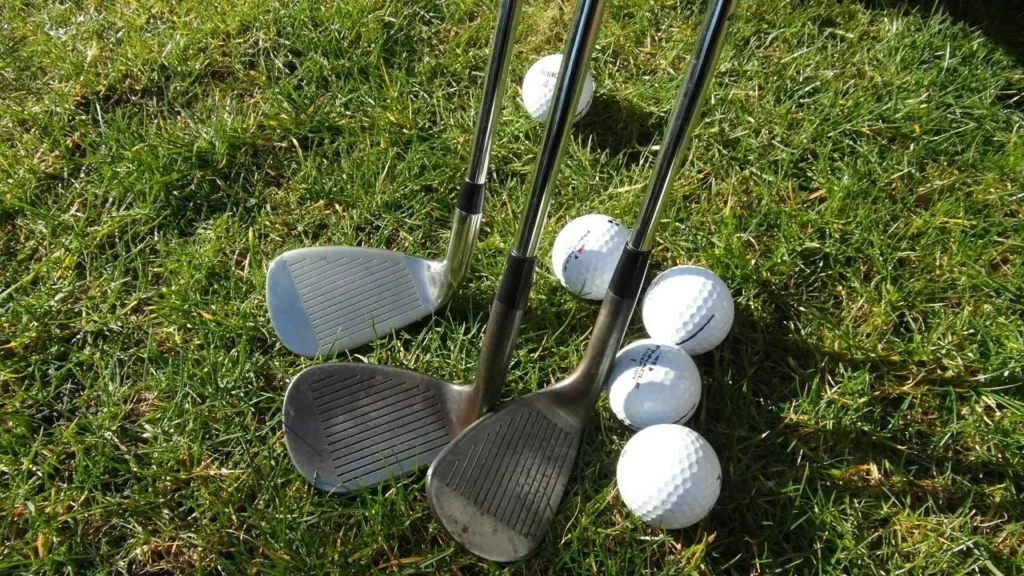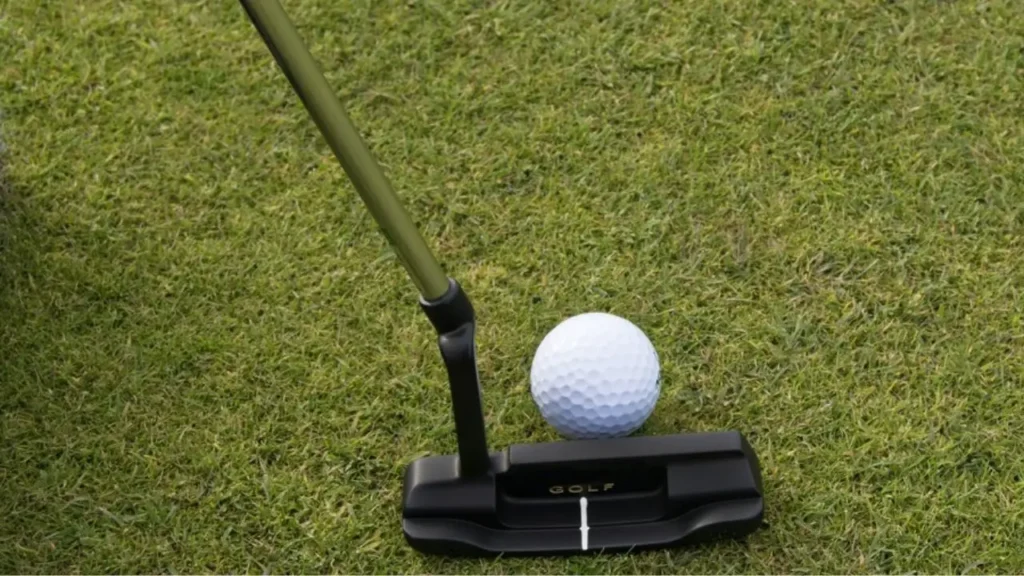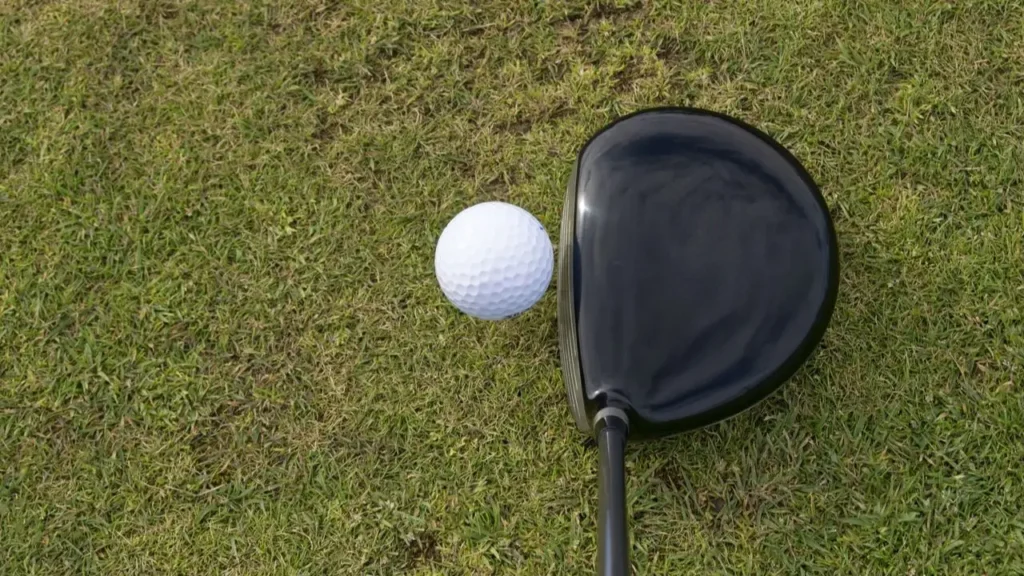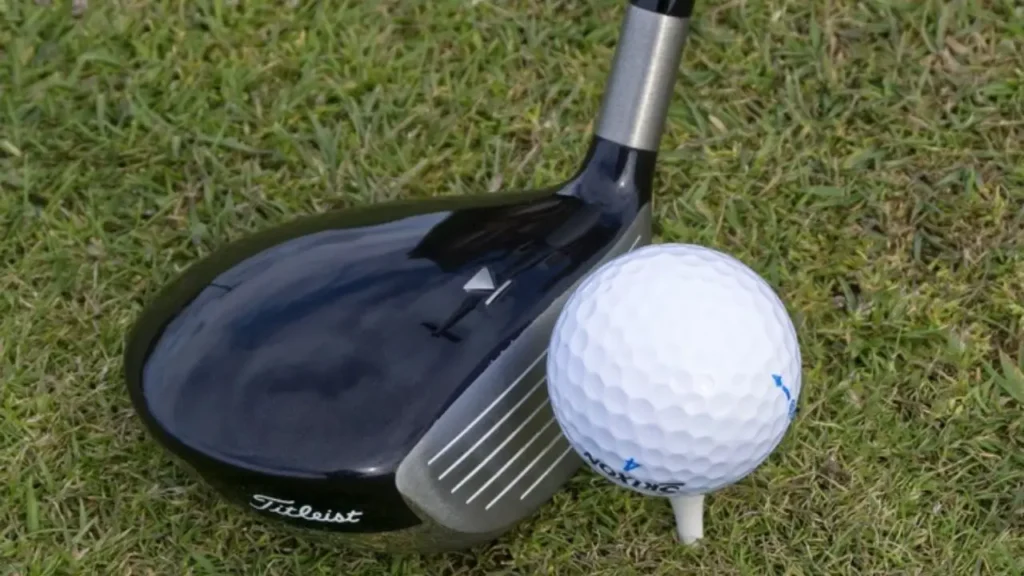Is It Worth It? The Average Cost to Reshaft Golf Clubs
- Last updated on January 5, 2024
- Toni Benedito
- Golf Equipment & Gear, Blog
Average re-shafting costs $35-$40 per club (excluding grips), influenced by materials and club type. Understand the significance of shaft characteristics, from length to flex. Save on costs with used shafts or a DIY approach. Optimize your golfing experience by choosing the right reshafting service for tailored performance.

Key Takeaways
- Golf club shafts play a vital role in your game, transmitting energy and affecting accuracy and distance. Re-shafting, or replacing worn or damaged shafts, can significantly improve your control and overall performance.
- Consider re-shafting if your current shafts are worn or damaged, leading to inaccuracies. Changes in clubhead speed or inconsistent shots may also signal the need for reshafting. It’s crucial to assess shaft condition regularly.
- The average cost to re-shaft golf clubs ranges from $35 to $40 per club, excluding grips. Factors influencing cost include the choice between steel and graphite shafts and whether you’re replacing the shaft on a driver or an iron.
- Knowledge of shaft lengths, weights, flexes, and materials (steel vs. graphite) is essential. Grip condition is crucial; worn grips can affect shot consistency. Tailoring your equipment to your swing mechanics enhances overall performance.
- Save on re-shafting by considering used shafts, comparing service prices, or even attempting a DIY approach if you’re experienced. Combining multiple repairs in one service appointment or custom-fitting your clubs can also lead to cost savings.
Introduction
Golf is a sport that requires a solid set of equipment to play, and one of the most important pieces in that set is the golf club. Specifically, the golf club shaft plays a vital role in how you play the game. It’s responsible for transmitting energy from your swing to the ball and can ultimately impact your accuracy and distance.
As such, it’s important to ensure that your clubs are in good condition. Sometimes, this means re-shafting them.
Re-shafting is a process where you replace an old or damaged shaft with a new one. This can be done for various reasons: perhaps you’ve noticed your shots aren’t as accurate as they used to be, or you simply want to upgrade your clubs with better equipment.
Whatever the reason may be, re-shafting can improve your game by giving you more control over your shots. The decision to re-shaft ultimately depends on several factors.
For starters, take a look at the condition of your current shafts. If they’re looking worn or damaged—perhaps there are chips or cracks—then it may be time for an upgrade.
Enjoying this article? Read more:
Check out this video below from Adams Golf Addiction‘s YouTube channel:
Additionally, if you’re finding that your shots are less accurate than they used to be (even though you haven’t changed anything else about your game), then it could be due to issues with the shaft. Another reason why someone might consider re-shafting is if their clubhead speed has changed since they last got fitted for clubs.
Swinging faster or slower can impact how much flex and rigidity are needed in a shaft to achieve optimal launch and control over distance. Of course, there are expenses involved with this process, which brings us to our next point: the average cost of re-shafting golf clubs.
On average, re-shafting costs around $35–$40 per club (not including grips). This price can vary based on various factors, such as whether you want steel or graphite shafts and whether you’re replacing the shaft on a driver or an iron.
Despite the potential expenses, many golfers find that re-shafting is worth it to improve their game. It’s important to find a reputable club repair service that can help guide you through the process and make sure you’re getting the best value for your money.

Understanding Golf Club Shafts
Golf is one of the most popular sports in the world, and golfers are always looking for ways to improve their game. One way to do that is by understanding your golf club shafts. The shaft is the long, slender part of the golf club that connects the grip to the club head.
Shafts come in different lengths, weights, and flexes, and they can significantly impact your game. Golfers should understand how their clubs’ shafts work before trying to reshaft them.
Shaft length is crucial when it comes to finding a comfortable fit for your swing mechanics. Longer shafts will give you more distance but may reduce accuracy, while shorter ones provide more control but less distance.
It’s essential to find a comfortable length that works with your swing mechanics. Shafts also vary in weight and flexibility. A heavier shaft can help generate more clubhead speed, while a lighter one can provide faster swings and increase accuracy. The flex point determines how much flexibility a particular shaft has during swings.
A low kick point means less flexibility, while a high kick point denotes more rigidity. The type of materials used for the creation of golf clubs has changed rapidly over time due to technological advancement.
"Mastering golf requires insight into your club's soul—the shaft. Varied lengths, weights, and flexes sculpt your play. Tailor shaft length for a blend of distance and control. Weight influences speed; flexibility, accuracy. Material evolution, from steel to graphite, impacts launch attributes."
Previously, steel was a commonly used material for creating golf clubs; however, modern technology allows manufacturers to make better use of graphite composites when creating new irons or drivers with improved launch attributes such as optimal launch conditions (often referred to as COR). Graphite shafts are generally lighter than steel ones, which helps generate increased swing speed, resulting in distance gains.
Grips also play an essential role in determining how well you hit the ball during swings because they affect control over where it goes after leaving your hands. If grips are worn or old, it might be worth considering replacing them when re-shafting clubs since grips could cause inconsistent shots or even slip from hands at impact, resulting in injury.
Understanding golf club shafts is crucial if you want to improve your game. The different weights, lengths, and flex points of shafts all play crucial roles in determining your optimal swing mechanics.
You should also consider the type of material used for your golf club shafts, and don’t forget about replacing club grips if they are worn or old. Now that you have a basic understanding of golf club shafts, let’s move on to when it’s time to reshaft your clubs.
Enjoying this article? Read more:

When to Reshaft Your Golf Clubs
Embarking on the journey of golf improvement necessitates a nuanced understanding of when to refresh the heartbeat of your game—the golf club shafts. Recognizing the signs calling for a reshuffle of these vital components is pivotal. Let’s delve into the common triggers indicating it might be time to re-shaft your golf clubs.
- Wear and Tear: Constant impacts from playing frequently can wear down club shafts. Wobbling clubheads or visible cracks signal the need for re-shafting.
- Changes in Your Swing: Aging or injuries may alter your swing dynamics, affecting ball flight or distance. Professional inspection can discern if equipment, not mechanics, is the culprit.
- Custom Fitting Benefits: Overlooking custom fitting hampers performance. If recent fittings reveal a need for different shaft characteristics, consider re-shafting for an optimal golf swing.
- Upgrading Clubs Economically: Opting to upgrade golf equipment without splurging on new ones? Re-shafting older clubs costs significantly less than replacing them, offering a budget-friendly alternative.
- Maintenance Rule of Thumb: Every 2-3 years, consider re-shafting irons for optimal launch conditions. Drivers, prone to wear, might need more frequent checks. Expert inspection ensures timely interventions for wear, tear, or damage.
In the quest for golfing excellence, recognizing the nuances of when to re-shaft your clubs is a strategic move. Whether prompted by wear, changes in your swing, custom fitting revelations, or a cost-effective upgrade path, understanding the timing for new shafts is key. Regular inspections by seasoned club repair specialists ensure your equipment stays in top-notch condition, translating to an enhanced and enduring golfing experience.

The Process of Reshafting Golf Clubs
- Step 1: First things first, figure out which clubs are crying out for a new lease on life. Get a pro’s opinion—they’re like golf club doctors. Discuss whether it’s time for a complete makeover or just some tweaks to keep your clubs swinging.
- Step 2: Now, let’s get the tools of the trade ready. It’s like gearing up for a DIY project, but with a touch more finesse.
- Step 3: Time to bid farewell to the old shaft. We’re talking gentle heating of the hosel to loosen up that stubborn adhesive. Specialized tools come into play, delicately prying out the old shaft without causing any unnecessary drama.
- Step 4: Cleanse that hosel! Remove any residue hanging around, leaving a clean slate for the upcoming romance with the new shaft.
- Step 5: Choose your knight in shining armor—a new shaft that suits your golfing needs. It’s like picking the perfect partner for a dance; this shaft’s got to move with you.
- Step 6: Trim it down to size! Think of it as giving your shaft a bespoke suit—tailored precisely to the bend position that complements your swing speed.
- Step 7: Flex point, the secret sauce of the golfing world. Customize it to your liking for that sweet spot of launch conditions.
- Step 8: Grip tape time! Wrap that new shaft in comfort, ensuring it stays firm in your hands during those intense swings.
- Step 9: Finally, secure the iron head in place. Think of it as the grand finale—the moment your club transforms into a harmonious masterpiece, ready to conquer the course.
Voila! Your golf clubs are now refreshed and ready to bring a new level of finesse to your game. Happy swinging!
"Upgrading your golf clubs may seem overwhelming, but it's a straightforward process with transformative benefits. Notice your shots falling short or veering off? Time to consider re-shafting. From assessing damage to custom fitting, this procedure ensures optimal performance, enhancing your game. Costs vary but investing wisely guarantees clubs tailored to your needs."
Overall, there are many expenses associated with replacing golf club parts like these, though surprisingly, some people do not take advantage of custom fitting when they purchase new irons from manufacturers or stores. This can save money in the long run by ensuring that each club is perfectly suited to your individual preferences and needs.
When re-shafting, the average cost ranges from $20 to $70 per club depending on the materials used and services provided, with more rigid or less flexible shafts tending towards higher prices. Re-shafting golf clubs involves removing the old shaft, selecting a new one that is customized for your swing preferences and optimizing launch conditions, adding grip tape for optimal grips and stability while playing, and finally gluing on the iron head to its mate.
Although expenses can add up quickly when upgrading equipment like this, it’s important to consider how much better your game will be once you have clubs that truly fit your individual needs. With this knowledge in hand, you’ll be able to make an informed decision about whether re-shafting is right for you—and if so, where to go for the best service at an affordable price!

Enjoying this article? Read more:
Check out this video below from ELITE FIT GOLF / Mobile Clubmaker‘s YouTube channel:
Average Cost to Reshaft Golf Clubs
When it comes to re-shafting your golf clubs, the cost can vary depending on a few factors. The typical price for re-shafting a club can range anywhere from $20 to $60 per club. This may seem like a lot of money, but if you compare it to the cost of buying new clubs, it’s quite reasonable.
The type of shaft you choose will have an impact on the overall cost of re-shafting your clubs. Graphite shafts tend to be more expensive than steel shafts, so keep that in mind if you’re looking to upgrade from steel.
Additionally, stiffer and upgraded shafts will also increase the cost. If you’re looking to reshaft all of your clubs, expenses can quickly add up.
It’s important to factor in the cost of grips as well, since they typically need to be replaced when getting new shafts installed. Another factor that can affect the cost is the kick point for each club.
The kick point is where the shaft bends during your swing, which affects ball flight and swing mechanics. If you’re looking for consistent ball flight with each club in your bag, then matching kickpoints may be something you want to consider, which would also increase costs.
While reshafting may seem like an expensive endeavor upfront, it can save you money in the long run compared to buying entirely new sets or even replacement clubs for individual ones that need repair. Additionally, getting properly fitted and matched equipment for your golf swing can lead to better results and, thus, a better overall experience on the course!
Enjoying this article? Read more:

Ways to Save on Reshafting Costs
When the daunting prospect of re-shafting your golf clubs looms, the costs can quickly escalate. The good news? You have strategic avenues to curtail these expenses without compromising performance. Let’s delve into practical ways to save on re-shafting and ensure optimal value for your investment.
- Opt for Used Shafts: Explore the world of used shafts—a cost-effective alternative that doesn’t compromise quality. Many retailers offer inspected and tested used shafts, providing a reliable and budget-friendly option.
- Shop Around for Services: Don’t settle for the first repair shop you encounter. Different services may have varying price tags for the same job. Research and compare options in your area to secure the best deal without sacrificing quality.
- DIY Reshafting: If you’re handy and have experience with golf equipment, consider the DIY route. While it requires specialized tools and equipment, the potential long-term savings make it a worthwhile venture.
- Bundle Repairs: Combine multiple club repairs into a single service appointment to trim down on overall costs. Addressing worn-out grips and replacing shafts concurrently can reduce labor expenses, making it a savvy financial move.
- Consider Custom Fitting: Instead of a simple repair or replacement, explore custom fitting. Though it may involve a higher initial cost, tailor-fitting your clubs, including grips and shafts, can substantially enhance performance, offering a valuable return on investment.
In the realm of re-shafting, navigating costs wisely is key to a rewarding golfing experience. Whether opting for the reliability of used shafts, savvy comparison shopping, embracing a DIY approach, bundling repairs, or investing in custom fitting, each avenue presents a unique opportunity to strike a balance between savings and superior performance.
Choose the strategy that aligns with your preferences and budget, elevating not only your game but also the enjoyment derived from the sport of golf.

Enjoying this article? Read more:
Check out this video below from DICK’S Sporting Goods YouTube channel:
Choosing the Right Service for Reshafting
When looking for a service to reshaft your golf clubs, it’s important to choose a reputable and experienced provider. There are many options available, from local pro shops to online services.
Here are some factors to consider when choosing the right service for your needs:
Firstly, check the reputation and experience of the provider. Look for reviews and testimonials from other golfers who have used their services before. You want a company that has a good track record of providing quality work and excellent customer service.
Secondly, consider the cost of re-shafting your clubs with each provider. While it’s important to choose a high-quality service, you also don’t want to overspend on expenses. Compare prices between providers to find one that offers competitive rates without sacrificing quality.
Thirdly, consider any additional services they offer. Some providers may offer club fitting or upgraded shaft options that can enhance performance even further. If you need new irons or drivers as well, look for a provider that offers comprehensive solutions.
Fourthly, ask about their process for replacing shafts and if they use high-quality materials like stiffer or more rigid shafts that can improve ball flight and enhance performance. The kick point is also an important factor in selecting the right shaft replacement, which affects how it responds during swings.
Consider convenience when choosing the right re-shafting service for your needs. If you’re comfortable shipping your clubs back and forth through an online service, this could save you time versus going into a local store with additional waiting times.
Overall, choosing the right re-shafting service is crucial to ensuring optimal performance from your golf clubs. Take these factors into consideration when making your decision, so you can enjoy an improved golf swing while minimizing expenses related to maintaining expensive golf equipment like irons or drivers over time!
Enjoying this article? Read more:

Conclusion
Reshafting your golf clubs can be a smart investment in enhancing your game and extending the life of your equipment. While the average cost to reshaft golf clubs may seem high, it is important to remember that this is a specialized service that requires expertise and precision.
It is also crucial to consider the potential cost savings of not having to purchase replacement clubs. When considering re-shafting, it is important to understand when it may be necessary and what factors can impact the cost.
Factors such as the type of shaft, grip, and clubhead can all affect the cost of re-shafting. Additionally, choosing a reputable service with experienced technicians can ensure a quality job and help you avoid any potential issues down the road.
While there are ways to save on re-shafting costs, such as purchasing used shafts or doing it yourself, these options may not always be practical or effective. Ultimately, investing in professional re-shafting services can provide peace of mind and improve your overall golf game.
Additionally, taking care of your equipment through regular maintenance and proper storage can also help prolong its lifespan and reduce the need for expensive repairs or replacements. This includes cleaning your clubs after each use, storing them in a dry place at room temperature, and checking for any signs of wear or damage.
Overall, while the average cost to reshaft golf clubs may seem daunting at first glance, it is important to weigh the potential benefits against the costs. By investing in professional services and taking proper care of your equipment, you can enjoy better ball flight and improved swing mechanics while avoiding costly replacements or repairs.
Share this Post
Toni Benedito
Keep Reading
Follow Us
Recent Posts

How Do Pro Golfers Get Paid? The Business of Golf
Professional golfers get paid both before and after tournaments. Before a tournament, they receive appearance fees, sometimes exceeding $1 million, to attract top players. After the tournament, earnings depend on their placement, with the PGA

How Much Do Golf Players And Pros Make? You Won’t Believe It!
Professional golfers earn substantial incomes through tournament winnings, sponsorship deals, and endorsements. Top players on the PGA Tour can make millions annually, with significant earnings from prize money and lucrative brand partnerships. For example, Rory

The Shocking Cost: How Much Does It Cost to Fly with Golf Clubs?
Flying with golf clubs can be a hassle, but it’s worth it for avid golfers. Costs vary by airline, ranging from $30 to $150 per way. Southwest Airlines offers a generous policy, allowing one set

Why Do Golfers Tape Their Fingers Before Hitting the Course?
Golfers tape their fingers to prevent injuries from repetitive motions, provide support for existing injuries, and improve grip comfort. It’s a popular technique among amateurs and pros alike, offering a lightweight and effective solution compared

How Much Does a Round of Golf Cost? Are You on Par?
The cost of a round of golf varies widely based on factors like course type, location, and time of play. Public courses typically range from $30-$100 per round, while exclusive ones like Augusta National or

Hidden Fees: How Much Does It Cost To Rent a Golf Cart
Wondering how much it costs to rent a golf cart? Explore factors like location, rental duration, and cart type impacting prices. Daily rates range from $50 to $80, while weekly rentals can vary from $200
Table of Contents







